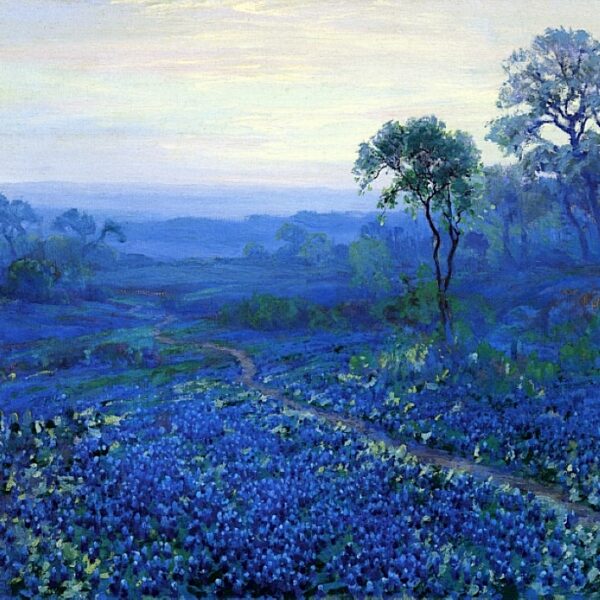Julian Onderdonk, the first of Robert and Emily Onderdonk’s talented children, was born in San Antonio in 1882. All of the Onderdonk children—Julian, Eleanor, and Latrobe—exhibited early signs of artistic talent. Even though Eleanor was a very competent portrait, landscape and still-life painter, and later in life, a curator of art at the Witte Museum, it was Julian who became the most well-known Onderdonk.
His father and mentor taught him the rudiments of art and stressed the importance of drawing at a early age. Like the Old Masters, the young boy learned to draw before he was allowed to pick up the paints. The drawings he did in the 1880s and 90s were described by critics as being done by an accomplished artist far beyond his years.
At the age of ten, he won second place for a watercolor he exhibited in the 1892 Dallas Fair. In 1898, he presented a fine pen and ink drawing to his best boyhood friend. Soon after that he presented the family an unusual large colorful painting for their dining room. But as the sales of his works increased, he would have no further need to give them away.
From 1898 to 1899, Julian attended West Texas Military Academy, where he was the editor of their magazine, Bugle Notes. His military training definitely prepared him for his adventure to New York City in January 1901. He studied at the Art Students League, under Kenyon Cox and took classes under Frank DuMond and Robert Henri. Under the tutelage of William Merritt Chase at his Shinnecock Summer School of Art at Southampton, Long Island, the young artist was encouraged, criticized, and helped to develop his own individual style.
In 1902, Julian married Gertrude Shipman, his next door neighbor in New York. He struggled to support his new family, producing paintings that sold for little money. Sometimes he did restoration and often painted what he called ‘pot boilers’ for extra income, which were signed under the assumed names Roberto Vasquez and Tunison. When his paintings began to sell, he stopped this type of work.
The art school that Julian started with fellow American artist Guy du Bois in 1904 was short lived. When asked by the Dallas Fair Association to organize the art exhibit in 1906 (a project he continued until his death), Julian and Gertrude made the decision to return to Texas. He began to paint historic structures like the Alamo and started taking trips west of his home in San Antonio to paint on ranches.
During this time, Julian molded together the tonalist style he learned from his father and the progressive Impressionist style from New York. His first panoramic Texas landscapes of bluebonnet fields, lifting haze, cactus, live oaks with Spanish moss hanging and powerful Texas skies began to emerge.
During World War I, Julian used his talents to draw large range finding targets for the Army, that were used by machine gun crews and rifle practice. The 1920 Dallas Fair was successful despite difficulties due to a shipping strike that kept many of the New York artist’s paintings from arriving. In 1922, Julian was flooded with requests for his paintings from all parts of the country. Although he was behind in his work and even lost some commissions, he made time for the San Antonio Art Leagues projects and shows. They made him an honorary life member. Despite ill health, Julian also set up the historic 1922 Dallas Fair.
Julian Onderdonk died, probably from appendicitis, on October 27, 1922, at the age of forty. Texas artist Rolla Taylor paid tribute in Onderdonk’s obituary in the San Antonio Express, when he said: “no artist in the South was equal to Onderdonk and that through his recognition in the highest artistic circles of America, Texas and San Antonio have become recognized for their wealth of material for the artist’s canvas.”

